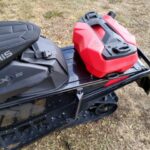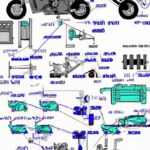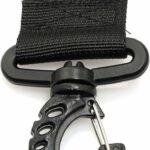As winter draws near, it’s time to prep your Polaris snowmobile for exhilarating adventures through fresh powder. Surprisingly, one of the most overlooked parts of a snowmobile is the stator, a vital component of its electrical system. Undoubtedly, a malfunctioning stator could ruin your snowy escapade. The article “How To Test A Polaris Snowmobile Stator?” has you covered, providing a step-by-step guide that will escort you through the pitfalls of stator diagnosis. It’s easy to follow and suitable for both beginners willing to get their hands dirty, and seasoned mechanics looking for a quick refresher. Don’t let a faulty stator turn your winter fun into a frosty ordeal!
Understanding the Function of a Stator
Perhaps you’ve wondered about the role of a stator in your snowmobile before. It’s an important component, playing a crucial role in getting your snowmobile’s engine running and providing it with the electrical power it needs.
Role of a stator in a snowmobile
You can think of a stator as playing a role similar to the alternator in a car. It’s essentially the stationary part of an electrical machine that interacts with the rotor (the rotating part) to create magnetic fields. Those fields generate electric current, which powers your snowmobile’s ignition system, lights, and other electrical equipment.
How a stator works in a Polaris snowmobile
In a Polaris snowmobile, the stator is tucked away inside the magneto housing. As the rotor, which is a magnet, spins around the stator, it induces a flow of current in the stator’s windings. This current is then used to charge the battery and power the electrical systems. Basically, the stator is what keeps your snowmobile vibrant and energetic!
Signs of a Defective Stator
Understanding the signs of a defective stator is key as it is one of the primary causes for a snowmobile’s electrical problems.
Drop in the electrical output
A faulty or worn-out stator will inevitably lead to a decrease in the electrical output of your snowmobile. You may notice that your snowmobile’s lights are dimmer than usual, or that its electrical systems aren’t performing as they should.
Snowmobile doesn’t start
Sometimes, a defective stator can prevent your snowmobile from starting. This is because a faulty stator might fail to generate the electrical power needed to ignite the spark plugs and get the engine running.
Poor performance and irregular behavior
A inconsistent or non-operational stator can result in your snowmobile acting out in strange ways. It might run erratically, or it might lose power unexpectedly while you’re riding. The stator’s condition directly affects the machine’s overall performance.
Sourcing the Necessary Tools
Knowing what tools you need and ensuring that they are of high quality can make the testing process a lot easier and more accurate.
Essential tools for testing a stator
The most crucial tool you will need to test a stator is a multimeter, which is used to measure voltage, current, and resistance. In addition, basic hand tools like a screwdriver and a set of wrenches will come in handy when removing the stator for testing.
Choosing quality and suitable tools
It’s key to use high-quality tools for both accuracy and safety. A good-quality multimeter will give more accurate readings, while well-made hand tools will help you to carry out the task without risking damage to your snowmobile or to yourself.
Preparing for the Test
Before you commence, it’s a good idea to familiarize yourself with the testing process and to take some appropriate safety measures.
Safety measures during the test
Safety should always be your top priority. Make sure to disconnect the battery before you begin, and to avoid wearing any loose clothing or jewelry that could get caught in the snowmobile’s moving parts. Always wear a pair of rubber gloves and safety goggles where necessary.
Understanding the testing procedures
Getting a proper grasp of how the testing procedure works will make your task a lot easier. You’ll essentially be using the multimeter to check for resistance and continuity in the stator’s windings.
Pretesting checks
Before you start testing, it’s a good idea to conduct a visual inspection of the stator for any obvious signs of damage like burnt wires or broken connectors. Also, make sure the stator is completely cool before you start handling it.
Locating the stator in a Polaris snowmobile
In a Polaris snowmobile, you’ll find the stator inside the engine’s magneto housing. You’ll need to remove the cover and various other components to get to it.
Disconnecting the Stator
Once you’ve located the stator, the next step is to disconnect it. It’s important to handle this part of the process with care.
Steps to safely disconnect the stator
To disconnect the stator, you’ll need to disconnect the battery first to prevent any unexpected electrical shocks. Then, you’ll need to unbolt the cover of the magneto housing, and gently unplug the stator from its connectors.
Tips for easy disconnection
It’s always a good idea to take pictures as you go, or to make a quick sketch. This will make the reassembly process much easier. Also, putting all the removed parts and screws in a container can prevent them from getting lost.
Avoiding damage to other parts
To avoid damaging the stator and other nearby parts, it’s crucial to use the correct tools and to work gently. Forcing anything might lead to damage and make your task a lot harder.
Performing the Multimeter Test
With the stator disconnected, you’re ready to perform the multimeter test. This test will check the stator’s resistance and can tell you if it’s defective.
Basics on using a multimeter
To use a multimeter, you’ll need to connect its two probes to the component you’re testing. In this case, you’ll connect the multimeter probes to the stator’s connectors. Then, you’ll need to adjust the multimeter to the correct setting to measure resistance, and read off the result.
Measuring resistance on the multimeter
When testing for resistance, you’re looking to see if the current is able to pass through the stator’s windings as it should. If the resistance reading is outside of the normal range, that’s a sign that something is wrong with the stator.
Interpreting multimeter readings in relation to the stator functions
Understanding how to interpret your multimeter readings is key to diagnosing a faulty stator. All multimeter readings should fall within the specifications given in your snowmobile’s service manual. Any readings outside these specs suggest that there is a problem with the stator.
Performing the Continuity Test
Continuity tests are another way to check if the stator’s windings are in good condition.
Understanding what a continuity test is
A continuity test checks if current can flow freely from one point to another point in an electrical circuit. If there is continuity, the multimeter will make a beep sound.
Steps involved in performing the continuity test
To perform a continuity test on a stator, you’ll need to connect one probe of your multimeter to one of the stator’s connectors, and the other probe to a good ground on the snowmobile. If there is no continuity, the multimeter won’t beep; that indicates the stator is in good condition.
Deducing results from the continuity test
If your multimeter beeps, that means there is electrical continuity between the stator and the ground. This is not a good sign because it means that there could be a short in the stator.
Interpreting the Test Results
Your multimeter test and continuity test results can tell you a lot about the condition of your stator.
Estimating the functionality of the stator from the test results
If all your multimeter readings fell within the specifications, and the continuity test suggested no shorts, your stator is likely in good working condition. If the readings were off, or if the continuity test suggested a short, your stator is most likely defective.
Possible problems indicated by the test results
The type of problem you’re dealing with might depend on your test results. For instance, low resistance could mean a short, while high resistance may indicate an open circuit or poor connection. Either way, such issues will likely require the help of an experienced mechanic.
Next steps after testing
If the tests indicate a problem with the stator, it’s generally recommended to replace it. Attempting to repair a faulty stator is usually not recommended, as it can lead to bigger problems down the road.
Considerations When Reconnecting the Stator
Once you’ve concluded your testing, it’s time to reconnect the stator.
Reconnecting the stator back to its position
To reconnect the stator, just reverse the steps you took to disconnect it. Make sure you refer to the pictures or sketch you made to help you put everything back the way it was.
Ensuring all the connections are correctly made
It’s extremely important to make sure all your stator’s connections are solid and correctly made. Loose or incorrect connections could lead to more electrical problems in the future.
Safety check after reconnection
After reconnecting the stator, remember to do a quick safety check. Ensure that all parts are correctly in place and all bolts and screws are tightly secured.
Tips for Maintaining a Healthy Stator
Lastly, treating your stator well can save you a lot of trouble and money in the long run.
Regular checks and tests
Regular checks and tests can help catch any problems early before they become larger issues. Make sure to include a stator test in your regular snowmobile maintenance routine.
Keeping the stator clean
Keeping your stator clean can improve its life expectancy. Be sure to clean off any dirt or debris that might have accumulated on it every once in a while.
Understanding normal readings for a healthy stator in Polaris snowmobiles
It’s also a good idea to familiarize yourself with the normal resistance and continuity readings for a healthy stator in a Polaris snowmobile. This can help you notice any irregularities early, so you can address them before they lead to bigger issues.
We hope this article gives you a better understanding of how to test your Polaris snowmobile’s stator accurately and safely. Remember, always prioritize safety and don’t hesitate to seek professional help if you’re unsure about any parts of the testing process.
- What Snowboard Bindings Should I Get? - January 23, 2024
- What Size Screws For Snowboard Bindings? - January 23, 2024
- How To Snowmobile On Water? - January 23, 2024










